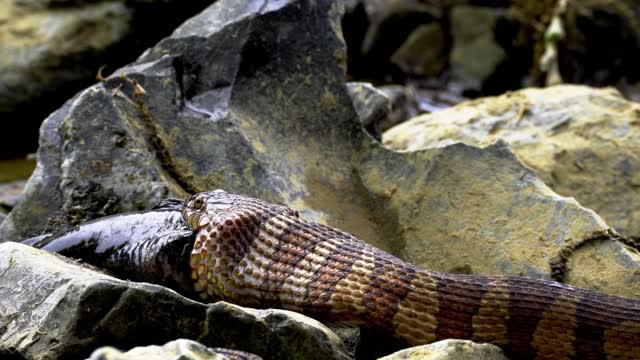Premium Only Content

curiosities about the snake
Snake is the name given to crawling reptiles, with an elongated body and no legs. In fact, calling these animals “snakes” is more correct, as “snake” in some countries is a word used only to refer to cobras, found in Africa and Asia.
There are, in Brazil alone, at least 370 species of snakes, of varying sizes, shapes and colors.
Contrary to what many people think, there are few species of snakes capable of causing harm to human beings. Among them, the ones that most arouse fear are the venomous ones.
Venomous animals are those that produce highly concentrated venom and have, in their body, a structure capable of inoculating (“injecting”) this substance: the venom. In the case of venomous snakes, they have teeth with modifications that allow this to be done.
The venomous snakes in Brazil have some characteristics in common that allow them to be identified and differentiated from species that do not inoculate venom, such as pythons, salamantas, anacondas, poppies and canines.
The first feature is the presence of the loreal pit, a structure that lies between the snake's eyes and nostrils.
Home Science Snake
SNAKE
Cobra is the name given to crawling reptiles with a cylindrical and elongated body, without legs. Not every snake is venomous, only those with inoculating teeth
Snake is the name given to crawling reptiles, with an elongated body and no legs. In fact, calling these animals “snakes” is more correct, as “snake” in some countries is a word used only to refer to cobras, found in Africa and Asia.
Cobra: real snake
Cobra: true snake.
There are, in Brazil alone, at least 370 species of snakes, of varying sizes, shapes and colors.
Contrary to what many people think, there are few species of snakes capable of causing harm to human beings. Among them, the ones that most arouse fear are the venomous ones.
Venomous animals are those that produce highly concentrated venom and have, in their body, a structure capable of inoculating (“injecting”) this substance: the venom. In the case of venomous snakes, they have teeth with modifications that allow this to be done.
The venomous snakes in Brazil have some characteristics in common that allow them to be identified and differentiated from species that do not inoculate venom, such as pythons, salamantas, anacondas, poppies and canines.
-
 2:26:21
2:26:21
vivafrei
10 hours agoEp. 279: Patel's GF Sues for Defamation! Rogue Judges vs. Trump! Raja Jackson, Kick Stream & MORE!
108K32 -
 LIVE
LIVE
SpartakusLIVE
1 hour ago#1 Verdansk Sniper gets HACCUSATIONS because of INSANE Headshots
196 watching -
 18:52
18:52
Colion Noir
7 hours agoCourt Rules You Don't Need AR-15s For Self Defense, Mayor's Message If You Love Kids Ban AR-15s
10.7K37 -
 DVR
DVR
Nerdrotic
3 hours ago $1.03 earnedThe Mysteries of Mars and the Moon with Mike Bara | Forbidden Frontier #114
10.6K3 -
 LIVE
LIVE
The Mel K Show
1 hour agoMel K & Chas Holloway | An Opposing Theory: The AI & Tyranny Question | 8-31-25
456 watching -
 LIVE
LIVE
Rallied
1 hour ago $1.26 earnedSolo Challenges All Day
166 watching -
 LIVE
LIVE
IsaiahLCarter
2 days agoGrandmasters and Heretics || APOSTATE RADIO #027
67 watching -
 3:03:40
3:03:40
Barry Cunningham
6 hours agoPRESIDENT TRUMP IS THE TROLLER-IN-CHIEF AND MORE BREAKING NEWS!
33.5K25 -
 13:07
13:07
Robbi On The Record
3 hours ago $1.48 earnedSweet Poison: The Big Fat Lie That’s Killing America
14.4K7 -
 1:00:09
1:00:09
Sarah Westall
3 hours agoFlorida Surgeon General: Operation Warp Speed plus Attacks on RFK Jr w/ Dr Ladapo
18.1K10